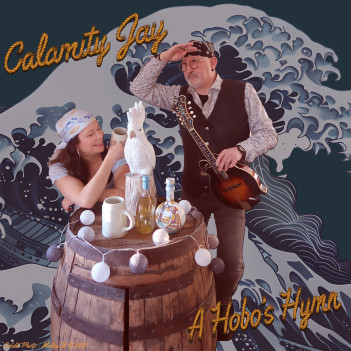Calamity Jay’s A Hobo’s Hymn is a striking folk ballad that blends emotional depth with musical sophistication. The song delves into themes of freedom, self-discovery, and the solitude that comes with the open road, offering listeners a rich narrative that invites reflection. As the fifth single from their upcoming EP, the duo, Rahel Rosenwald and Jean-Claude Boyer (JayC), demonstrates their ability to craft songs that resonate on both an emotional and musical level.
From the very beginning, the song captures attention with a delicate interplay of acoustic guitar and mandolin. These instruments create a soft, intimate ambiance that perfectly complements Rahel’s evocative vocals. Her voice, described as having a “weathered sense of wisdom,” guides the listener through the song’s emotional landscape, rich in imagery and introspective thought. As the song progresses, additional harmonies and piano elevate the sound, building toward an emotional and powerful finale.
The lyrics of A Hobo’s Hymn reflect a deep exploration of the life of a wanderer, one who finds peace in nature rather than in material wealth. The song speaks to the transient beauty of freedom, with the lyrics capturing the internal journey of finding solace in the vastness of the world. This sense of liberation is poignantly contrasted with the inherent solitude of the wanderer’s life.
What sets this track apart is its seamless blend of traditional folk with modern sensibilities. Critics have praised the duo for their ability to infuse a timeless genre with a fresh perspective. The addition of male backing vocals adds further richness to the sound, enhancing the emotional resonance and contributing to the song’s reflective quality. Many have drawn comparisons to the work of folk icons like Townes Van Zandt and Gillian Welch.
What sets this track apart is its seamless blend of traditional folk with modern sensibilities. Critics have praised the duo for their ability to infuse a timeless genre with a fresh perspective. The addition of male backing vocals adds further richness to the sound, enhancing the emotional resonance and contributing to the song’s reflective quality. Many have drawn comparisons to the work of folk icons like Townes Van Zandt and Gillian Welch.
